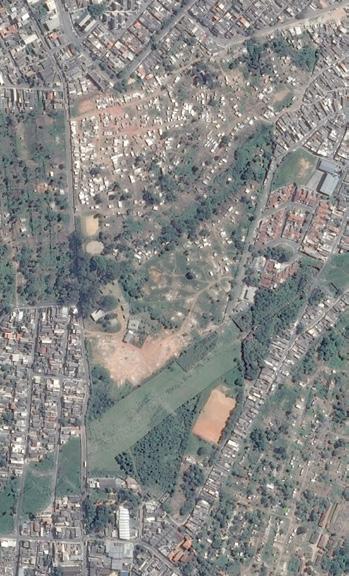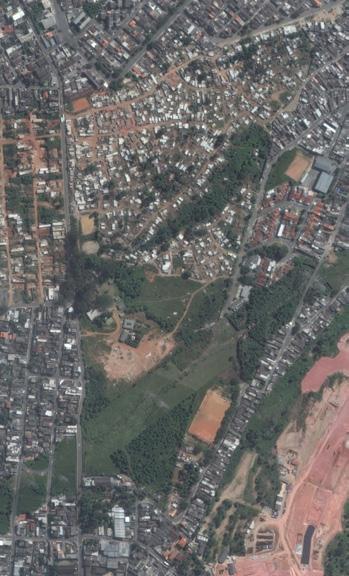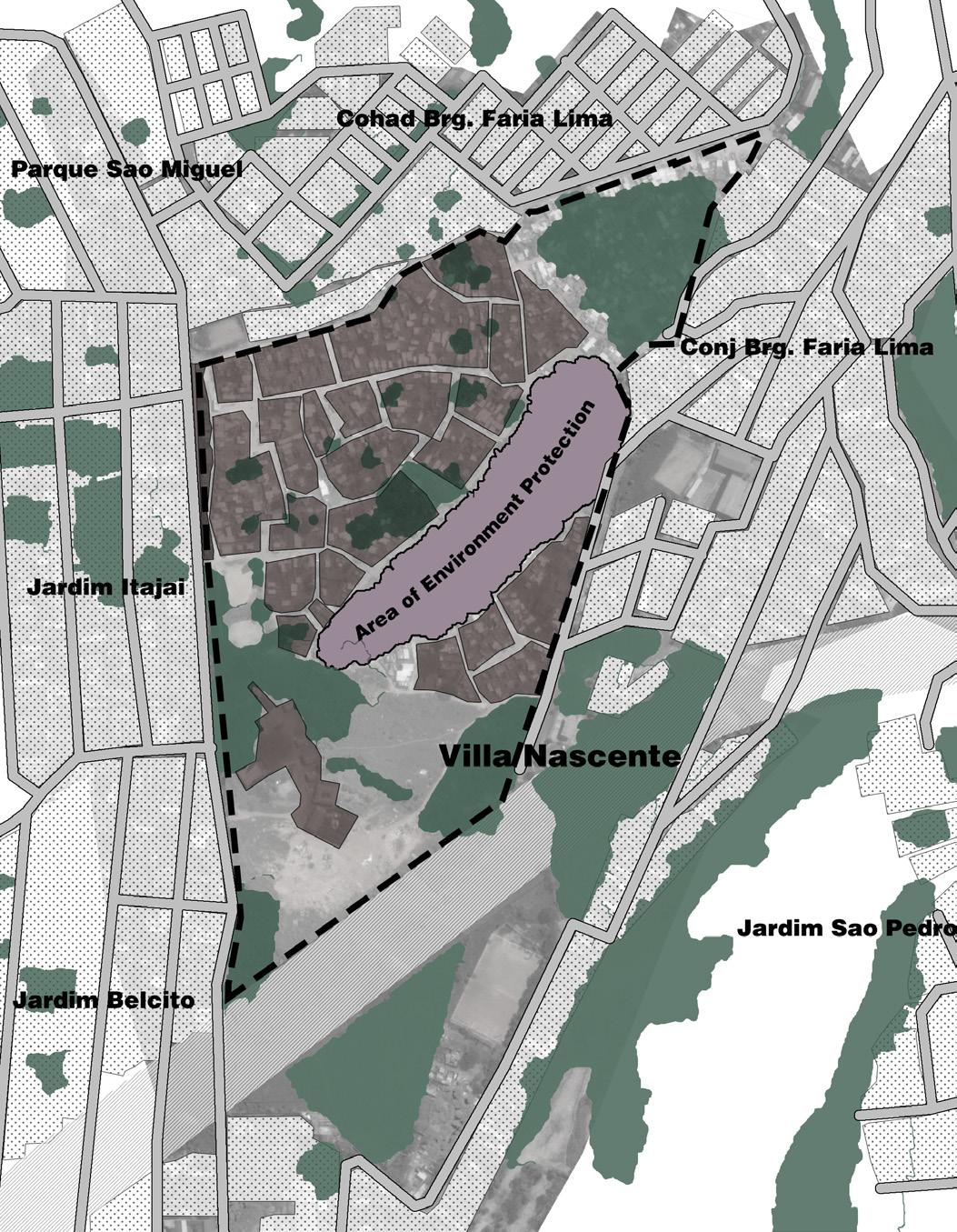
3 minute read
Problem Identification and Relevance
Ocupacao Anchieta Property Area Surrounding Community
Vegetation Coverage Environmental Protection Area
Electricity Wire Area
Deforestation and pollution from household waste are two major environmental problems in this area. Contaminants usually flow into the creek through surface water runoff. If the problems are not to be mitigated, local residents are likely to be evicted from the community. Thus there is a great need to reduce these relevant problems around the creek.
99 (left) Site with Adjacent Neighborhoods.
The creek runs from southwest to northeast through the center of Ocupação Anchieta (the Occupation). About 25 meters (82 feet) of dense local vegetation surrounds the creek area. This green space contains three springs, which are referred to by the residents as minas (springs). The presence of these springs forms a valley, the lowest point being the creek, which characterizes the varied topography in the Occupation.
Pollution from household waste and deforestation from the construction of homes negatively impact the creek and springs areas. Inadequate waste disposal contaminates the soil and groundwater. During heavy rains, stormwater catches these pollutants and carries them downhill into the creek, further impacting water quality. Over the past 4 years, the vegetation coverage of this area has significantly decreased, which also hinders this area’s ability to filter out and recover from pollution.
The environmental degradation of the creek and springs area is a critical problem, both in terms of environmental stewardship and in terms of housing security. Current Ocupação Anchieta residents may be evicted from the site because of the settlement’s negative impact on the environment. If residents do not succeed in mitigating this pollution, their tenure security will become even more fragile. The Taubman College Team plans to work with the Occupation to restore the creek and springs area, and to ultimately help residents improve tenure security. Project goals include: reducing the existing pollution in and around the creek area; protecting the natural environment in the future; and facilitating proper human interactions with the area.
Although human and nature interactions fulfill a significant educational and leisure need, these interactions must prioritize
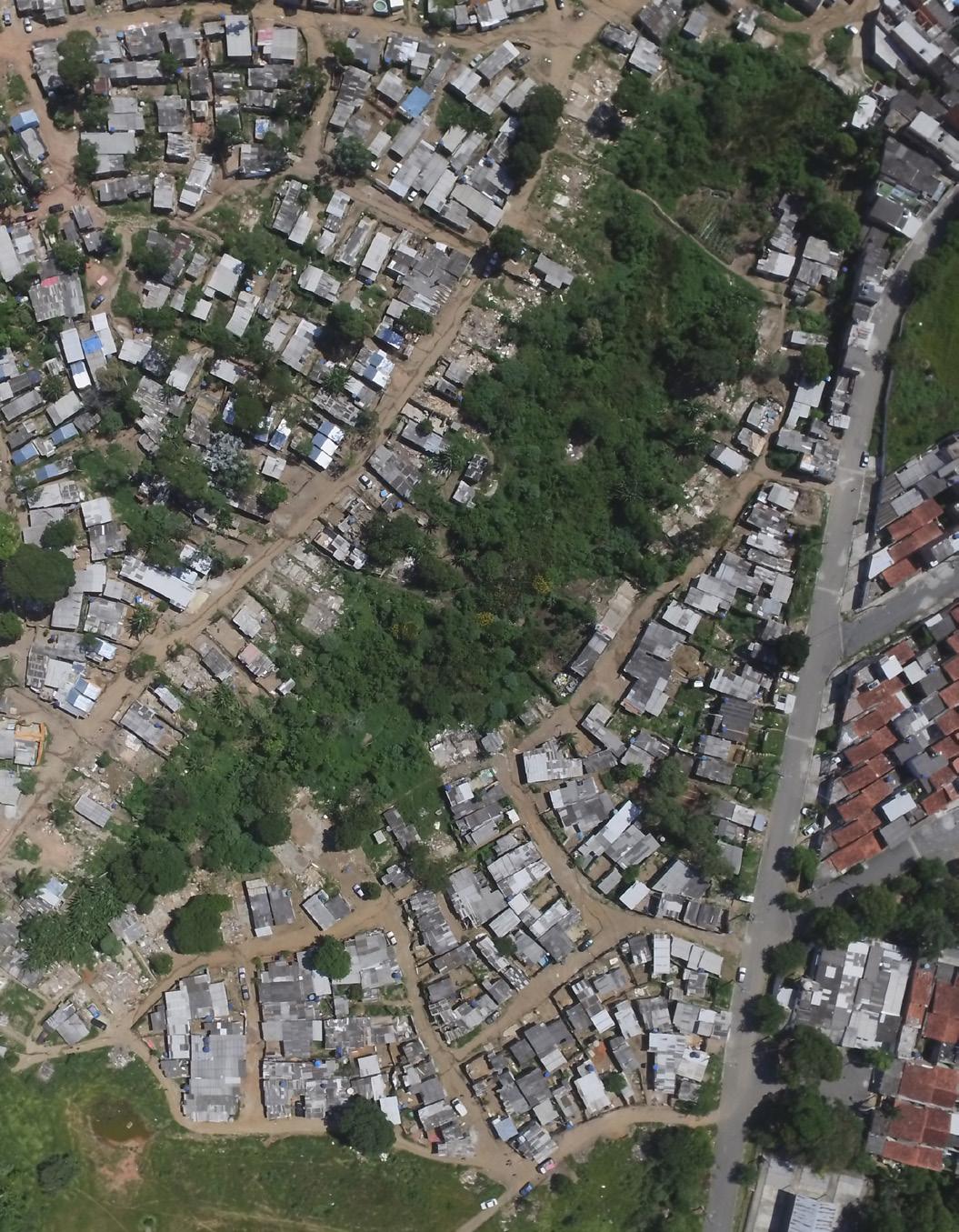
the conservation and restoration of natural resources. To solve potential conflicts between “protection” and “human interactions” needs requires time and careful planning. For instance, in the springs, the environment is still very vulnerable due to uncontrolled pollution and deforestation. Thus, it is risky to allow people into the area until the environment has been restored and an environmental education program has been implemented.
Creek revitalization must precede the planning for recreational activities. If the springs open to the public too soon, even with restrictions, environmental recovery may be compromised. For instance, due to the pollution and deforestation, soil quality has changed substantially and may not be suitable for even tiny constructions (recreational purposes such as paths, benches, parks, etc.).
The Taubman Team proposes both short term and long term plans for the site. In the short term, we suggest limiting human activities in the area, giving the springs recovery time from pollution and deforestation. In the long term, after some recovery, the plan offers
100 (left) Aerial Image of the Creek from Drone. Creek and Springs Dissipation Storm Water Collecting Rainwater Runoff
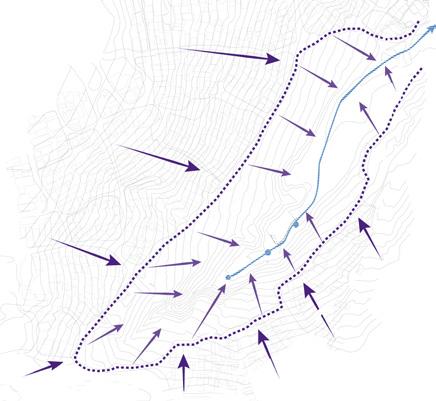
101 Stormwater Running Down to the Creek

Deforestation Area Existing Houses Creek and Springs
102 Deforestation and Existing Houses.
EVOLUTION OF THE SITE SINCE 2011
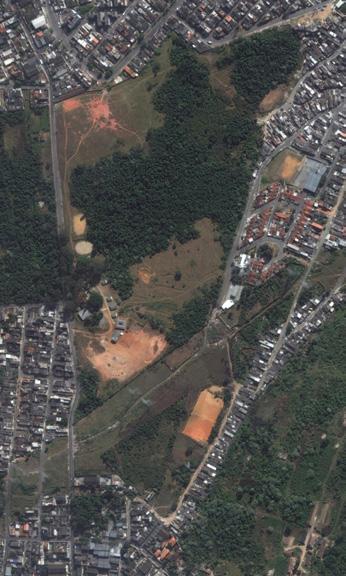

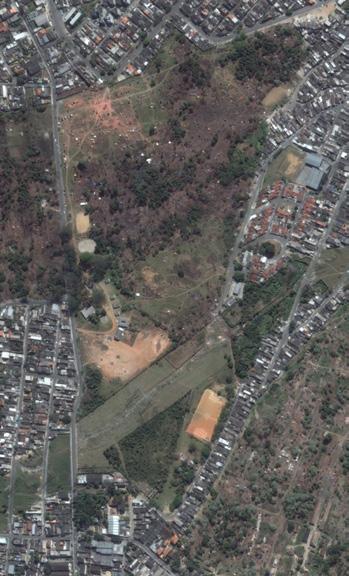
2011 2012 2013
104 Aerial Images from Google Earth Pro.
